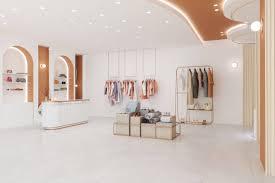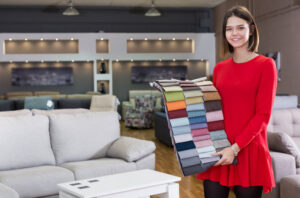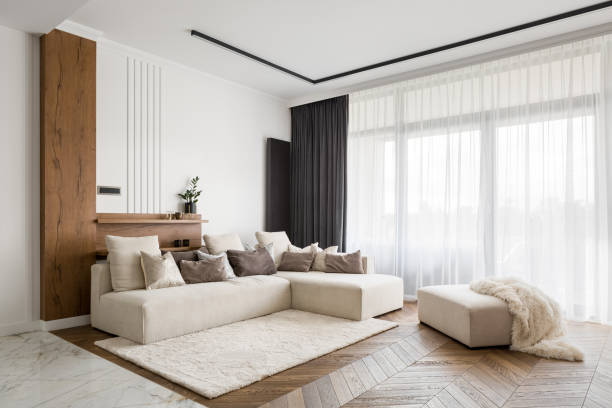When you think about increasing furniture sales, your mind probably jumps to product design, seasonal promotions, or customer service. But what if one of the most powerful tools to grow revenue isn’t a piece of furniture—its a people counter?
Welcome to the intersection of foot traffic analytics and retail strategy. With people counters, furniture retailers are discovering new ways to optimize layouts, drive conversions, and yes—even sell more ottomans.
The Power of Foot Traffic Data
In retail, knowledge is profit. People counters—devices that track how many people enter a space and how they move through it—are becoming indispensable tools for understanding real-time shopper behavior.
Unlike fast-fashion or convenience retail, furniture shopping is a slower, more considered process. Buyers wander, compare, test, and often return later before purchasing. This makes it even more crucial for furniture stores to track occupancy and movement patterns. A people counter gives you the missing link between showroom design and customer decisions.
From Entrance to Ottoman: Mapping the Shopper Journey
Let’s say you’re trying to increase sales of a new line of ottomans. Traditional approaches might focus on better signage or running a weekend sale. But without understanding how customers navigate your store, you’re only seeing part of the picture.
People counters can show:
- How many people enter your store daily
- Which areas get the most foot traffic
- How long customers dwell in specific zones
- Where they go first, next, and last
Armed with this data, you might discover that only 30% of shoppers reach the ottoman display tucked in the back. That insight alone can lead to a smarter placement strategy—and potentially higher sales.
Optimizing Layouts to Boost Conversion

Modern furniture stores often replicate the “home experience” in their layout: cozy living room settings, open-concept dining displays, and thoughtfully arranged accessories. But is your layout actually working for your customers?
Foot traffic data helps identify:
- Cold zones – areas rarely visited by customers.
- Hot zones – high-traffic sections where premium placement could drive interest.
- Bottlenecks or dead ends – poor flow can cause visitors to leave early.
With this information, you can rearrange key pieces like ottomans, coffee tables, or accent chairs to high-traffic spots—or design immersive setups to encourage lingering and interaction.
Data-Driven Staffing for Better Customer Service
One of the most practical applications of a people counter is smarter staffing. By analyzing hourly and daily traffic patterns, managers can align schedules with actual customer volume—not just assumptions.
For example:
- If your busiest hours are 2–4 PM on Saturdays, ensure your best-trained sales team is on the floor.
- Identify when customer traffic peaks but conversions dip—this might mean your team is spread too thin to assist shoppers effectively.
In high-touch retail like furniture, that extra moment of attention from a staff member can make the difference between browsing and buying.
Inventory Planning with Confidence
Inventory management is one of the costliest challenges in furniture retail. Overstocking means tied-up capital; understocking means missed opportunities.
Here’s where occupancy data supports smarter planning:
- Compare visitor trends with actual sales to identify which products get attention but not conversions.
- Discover items that may need better merchandising, clearer pricing, or improved signage.
- Justify restocking decisions with actual shopper interest—not just past sales data.
By cross-referencing traffic data with POS data, you gain a 360-degree view of your store’s performance.
Proving the ROI of Promotions and Marketing
Let’s say you run a campaign to promote ottomans with in-store signage, Instagram ads, and a weekend discount. How do you measure its success?
People counters let you track:
- Pre- and post-campaign footfall
- Changes in traffic to specific product areas
- Conversion rate changes tied to the campaign window
This kind of insight helps you prove ROI, refine your future campaigns, and tailor your messaging for even better results.
Why Ottomans (and Everything Else) Benefit from Tech-Driven Retail
The humble ottoman represents more than just a piece of furniture—it symbolizes how small changes in visibility, placement, and engagement can impact your bottom line.
In today’s competitive furniture market, relying on intuition alone isn’t enough. Retailers need data-powered strategies to:
- Maximize showroom potential
- Deliver better customer experiences
- Make confident business decisions
And it starts with understanding who’s walking through your doors—and what they’re doing once inside.
Turning Footfall into Furniture Sales
From the cozy corner where your ottomans rest, to the sleek entryway that welcomes your guests, every inch of your store holds potential. With a people counter, you’re not just tracking foot traffic—you’re unlocking insights that can reshape your retail approach.
In a business where comfort and style matter, let your strategy be just as refined. Invest in occupancy analytics, and watch your ottoman sales—and everything else—take a seat at the top of your sales reports.
Installing a Traxsales people counter in your store will allow you to build a stronger rapport with customers that you may not have had before, through sales insights and data. Give our President of Sales Spencer Mink a call directly at 330-319-1445 or you can schedule a meeting, we look forward to hearing from you!


